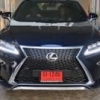Search the Community
Showing results for tags 'markets'.
-
https://asia.nikkei.com/Business/Markets/Brent-crude-hits-130-a-barrel-Nikkei-plunges?utm_campaign=GL_coronavirus_latest&utm_medium=email&utm_source=NA_newsletter&utm_content=article_link&del_type=10&pub_date=20220307150000&seq_num=11&si=44594 Brent crude hits $130 a barrel; Nikkei plunges U.S., Europe ban on Russian products and delayed Iran nuclear talks spark fears Brent was quoted $12.73 higher at $130.84, while U.S. crude rose $9.92 to $125.60. © Reuters March 7, 2022 09:12 JSTUpdated on March 7, 2022 11:54 JST SYDNEY (Reuters) -- Oil prices soared and shares sank in hectic trading on Monday as the risk of a U.S. and European ban on Russian products and delays in Iranian talks triggered what was shaping up as a major stagflationary shock for world markets. The euro extended its slide, hitting parity against the safe haven Swiss franc, and commodities of all stripes were on the rise as the Russian-Ukraine conflict showed no sign of cooling. Russia calls the campaign it launched on Feb. 24 a "special military operation", saying it has no plans to occupy Ukraine. Having surged more than 10% in wild early action, Brent was last quoted $7.90 higher at $126.01, while U.S. crude rose $6.67 to $122.35. That jump will act as a tax on consumers and the potential blow to global economic growth saw S&P 500 stock futures drop 1.5%, while Nasdaq futures shed 1.9%. U.S. 10-year bond yields also dropped to their lowest since early January. EUROSTOXX 50 futures dived 3% and FTSE futures 2.5%. Japan's Nikkei sank 3.2%, while MSCI's broadest index of Asia-Pacific shares outside Japan lost 1.6%. Chinese blue chips shed 0.8% amid a sea of red across Asian markets. Having climbed 21% last week, Brent crude was further energized by the risk of a ban of Russian oil by the United States and Europe. Read full story "If the West cuts off most of Russia's energy exports it would be a major shock to global markets," said BofA chief economist Ethan Harris. He estimates the loss of Russia's 5 million barrels could see oil prices double to $200 a barrel and lower economic growth globally. And it is not just oil, with commodity prices having their strongest start to any year since 1915, says BofA. Among the many movers last week, nickel rose 19%, aluminium 15%, zinc 12%, and copper 8%, while wheat futures surged 60% and corn 15%. That will only add to the global inflationary pulse with U.S. consumer price data this week expected to show annual growth at a stratospheric 7.9%, and the core measure at 6.4%. All of which complicates the policy picture for the European Central Bank when it meets this week. "Given the potential for stagflation is very real, the ECB is likely to maintain maximum flexibility with its asset purchase program at 20 billion euros through Q2 and potentially beyond, thus effectively pushing out the timing of rate hikes," said Tapas Strickland, an economist at NAB. "Higher CPI forecasts, though, mean rate hikes will be needed on the horizon." The near-term prospect of a more dovish ECB combined with safe-haven flows to drive German 10-year bond yields down a huge 32 basis points last week. U.S. 10-year yields were down at 1.69%, having already dropped 23 basis points last week. Fed fund futures were also gaining as the market priced in a slower pace of rate rises from the Federal Reserve this year, though a March hike is still seen as a done deal. With the outlook for European growth darkening, the single currency took a beating and fell 3% last week to its lowest since mid-2020. It was last down 0.8% at $1.0834 and in danger of testing its 2020 trough around $1.0635. The euro was also tumbling against the Swiss franc to break under 1.0000 for the first time since early 2015. The dollar was broadly firmer, supported in part by a strong payrolls report which only reaffirmed market expectations for a Fed hike this month. The dollar index was last at 99.134 having climbed 2.3% last week. "Events in the Ukraine are increasingly overwhelming the euro," said Richard Franulovich, head of FX strategy a Westpac. "With safe-haven flows likely to continue for some time yet and Fed officials eager to press on with their policy normalization plans, 100+ for (the dollar index) is just a matter of time." Gold benefited from its status as one of the oldest of safe harbors and was last up 1.1% at $1,991 an ounce.
-
Toyota Motor said on Friday it would roll out eight compact car models tailored for emerging markets by 2015 in an attempt to catch up to front-runners such as Volkswagen (VW) and General Motors (GM). Toyota, which lost the crown as the world's top automaker last year, is looking to reduce its dependence on the mature North American, European and Japanese markets. It wants to shift more of its weight to growth markets such as China, India and Brazil, where Volkswagen, GM and Hyundai Motor have taken the lead. The Japanese automaker aims to sell half of its vehicles in emerging markets by 2015, up from around 45 per cent last year and 18.6 per cent in 2000. 'In emerging markets, there are four or five automakers vying to take the lead in sales volumes,' Toyota executive vice-president Yukitoshi Funo told reporters. 'Particularly in the South-east Asian region, Volkswagen and others are looking to challenge our lead so we can't be resting on our laurels,' he said. Including the Etios model that it launched in India in December 2010, Toyota plans to introduce eight compact cars by 2015, targeting combined annual sales of more than one million vehicles in over 100 countries during that period. The upcoming cars will be priced around 1 million yen (S$16,000) or higher and produced in local markets such as India, Brazil and China. Toyota said it would aim to procure 100 per cent of the cars' components locally to lower costs - a move that would require a stronger research and development function in those markets. By 2013, production capacity in emerging markets will rise to 3.1 million vehicles a year, from 2.38 million in 2010, matching the level in Japan, Toyota said. Mr Funo dismissed a report published in Japan's Asahi newspaper on Thursday that Toyota was working on a car priced around 500,000 yen (S$8,000) for the Indian market, to be sold under a new brand from around 2016. 'We won't go to the 500,000 yen segment - it's not our category,' Mr Funo said. 'We want to beef up our presence in segments where we can be competitive. There are many other options for customers looking in that price range, including used cars.' Mr Funo added that the cheaper segments were the territory of subsidiary Daihatsu Motor, which has expertise in smaller, lower-cost vehicles. Carmakers such as Nissan Motor and Hyundai are considering ultra low-cost cars, potentially tapping a huge base of consumers trading up from motorcycles. Toyota's cheapest car is the Etios, which sells for about US$9,000 (S$11,500) in India, or double the price of market leader Maruti Suzuki India's Alto. Source: http://www.straitstimes.com/Motoring/Story...ory_803064.html
-
http://sg.finance.yahoo.com/news/Japan-int...353846.html?x=0 Japan playing with fire. Everytime when gov. intervenes the forex market directly, they loses big time. Speculators love to beat government in situation like this. Just like hackers love to beat the companies when they say their system is unhackable. With this, I am seeing a fnancial crisis coming sooner than expected. USD is going to collapse, EuroZone is going to go down with the debt crisis (they will never be able to bail out Italay and Spain like they did with Greece) and BOJ is going to go broke. This is what happen when money is not back by anything and is just a free printing press.
- 59 replies
-
- Japan
- intervenes
-
(and 3 more)
Tagged with:
-
anyone living near these wet markets? the HDB has said that there are some other wet markets in those areas. so you dun have to put up with the price increase if you are willing to travel a bit further. pity those stall holders. tougher to make a living. some may call it quits if business is no good
-
Sheng Siong rises rent at 5 wet markets by 30% By Sharon See | Posted: 23 March 2010 2000 hrs Photos 1 of 1 SINGAPORE: Stallholders at five wet markets will have to pay 30 per cent more in rent from next month. They have been informed of the increase by supermarket chain Sheng Siong, which bought the markets over from a private property developer late last year. The five wet markets are in Choa Chu Kang, Bukit Batok and Serangoon. Currently, they pay about S$2,000 to S$3,000 in rent. Many stallholders feel that the 30-per-cent increase is too high, and a few said they may even give up their businesses. Some are thinking of passing the costs to customers but are also worried that this would hurt businesses, especially in the face of competition from other wet markets and supermarkets. Sheng Siong said it had no choice but to increase rental rates, as it had to pay bank interest fees, property tax and maintenance fees after buying over the five wet markets for about S$25 million. - CNA/yb What they mean by No Choice......if they don't buy...no need to pay any interest and tax... Wanna pass it to the storeholders just say so... End of the day..consumers suffer....KNN... :angry:


.png)



